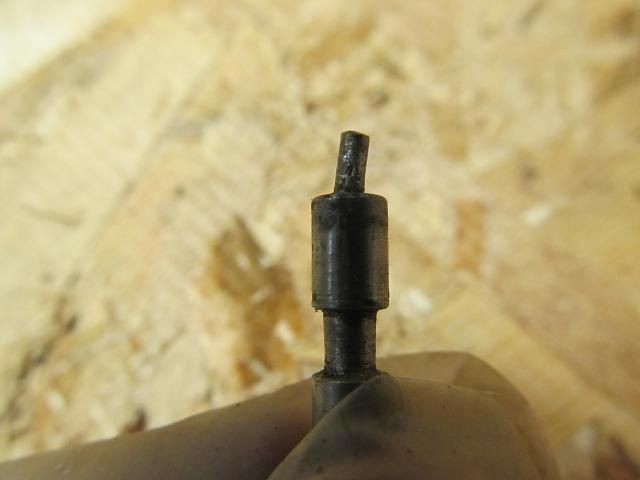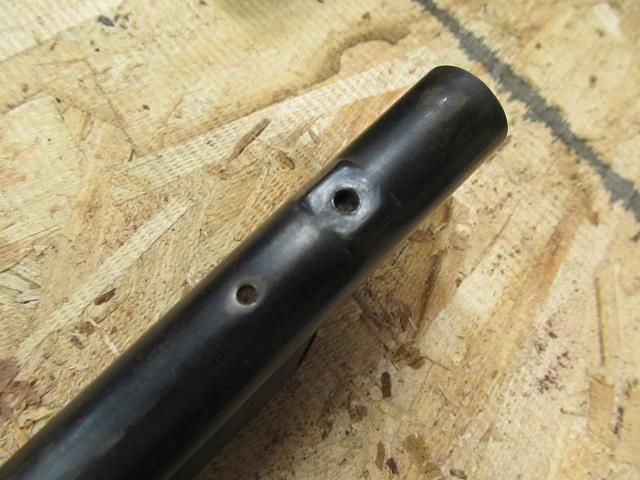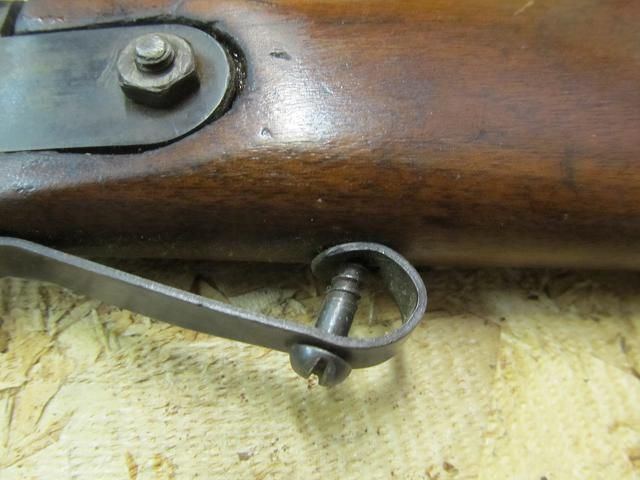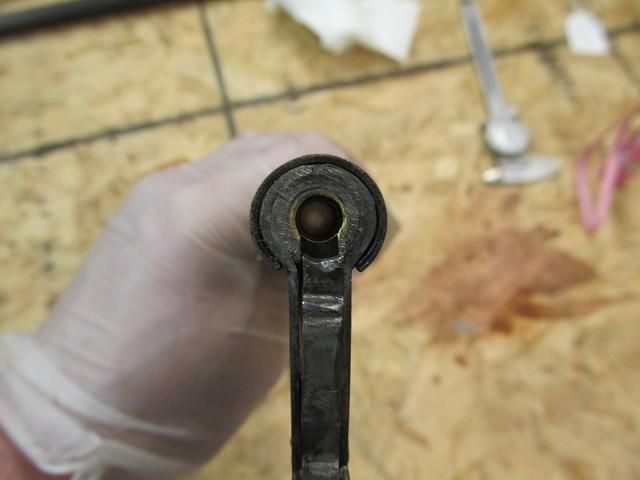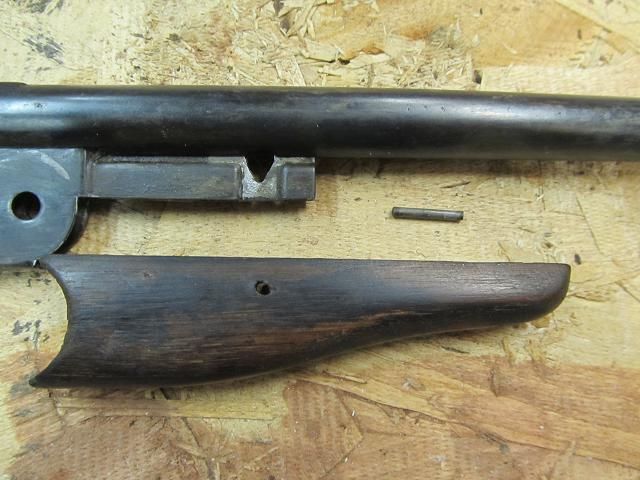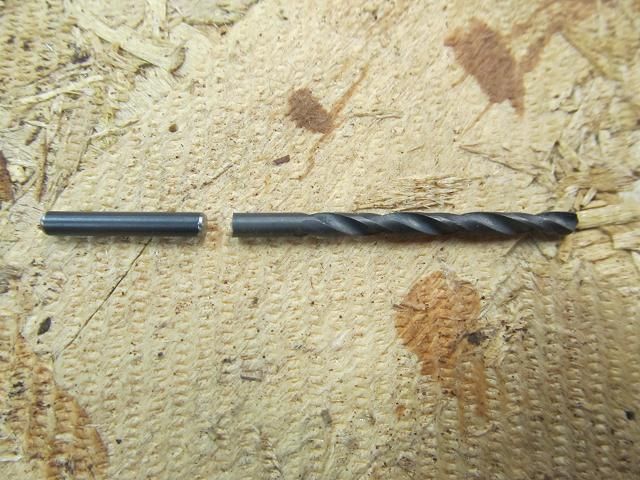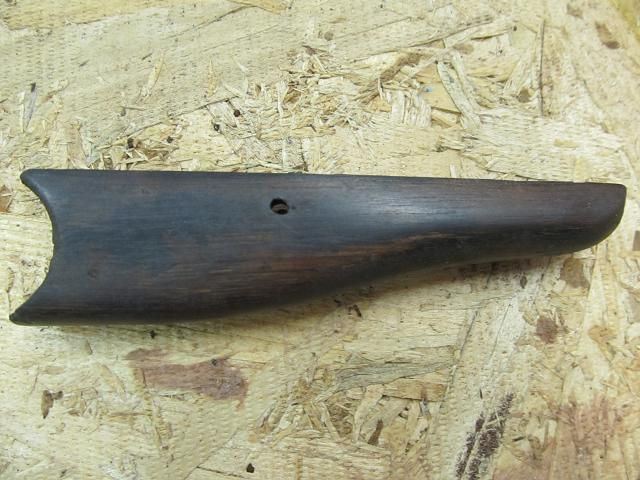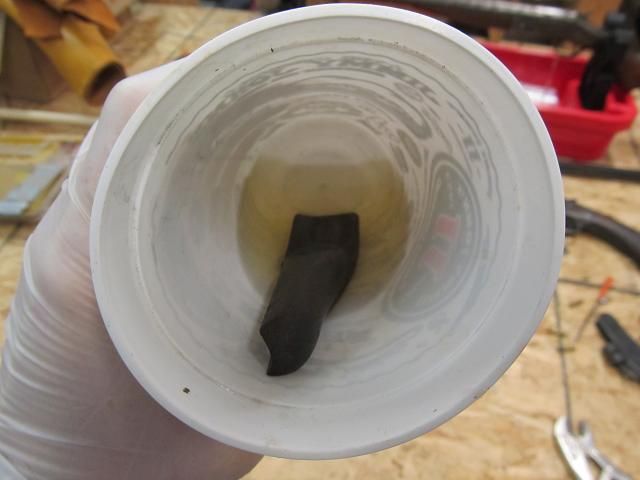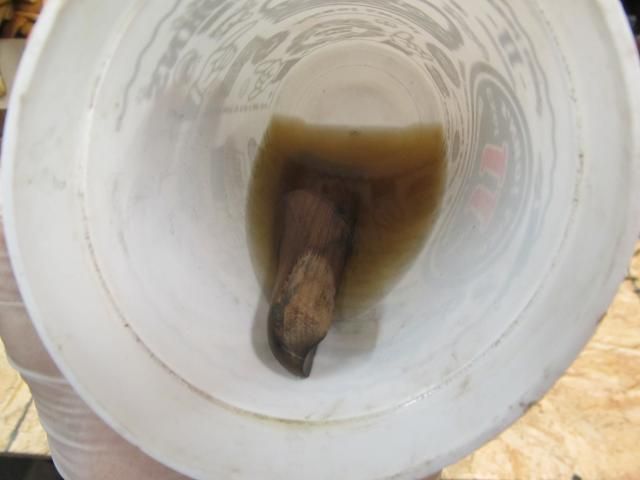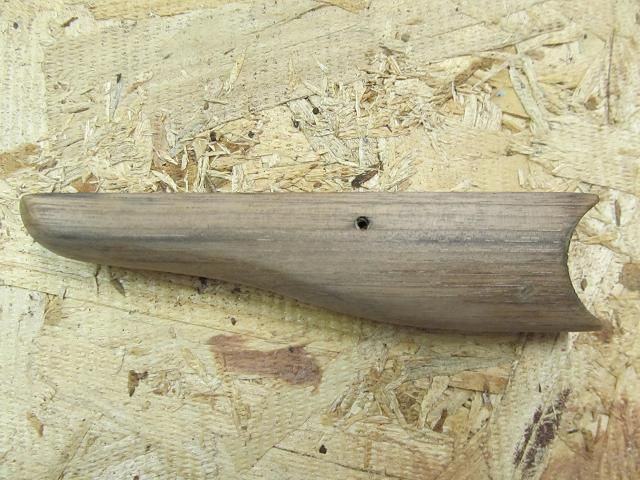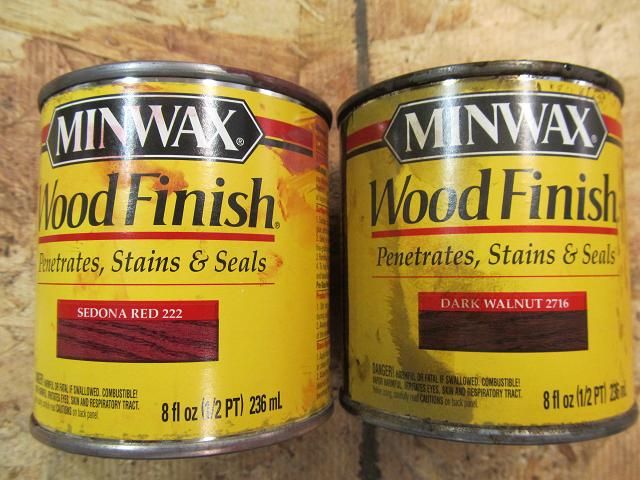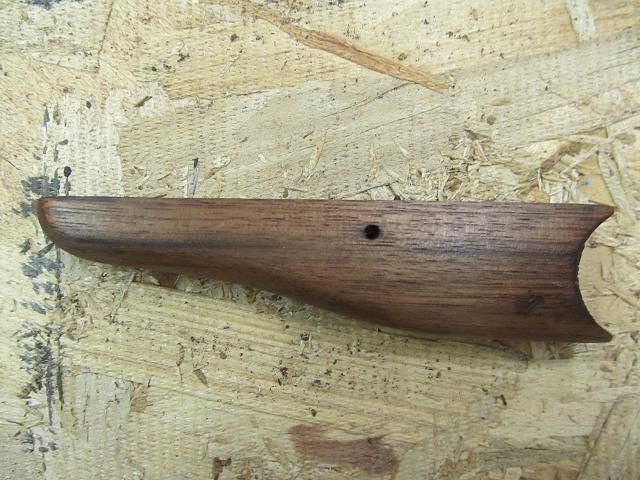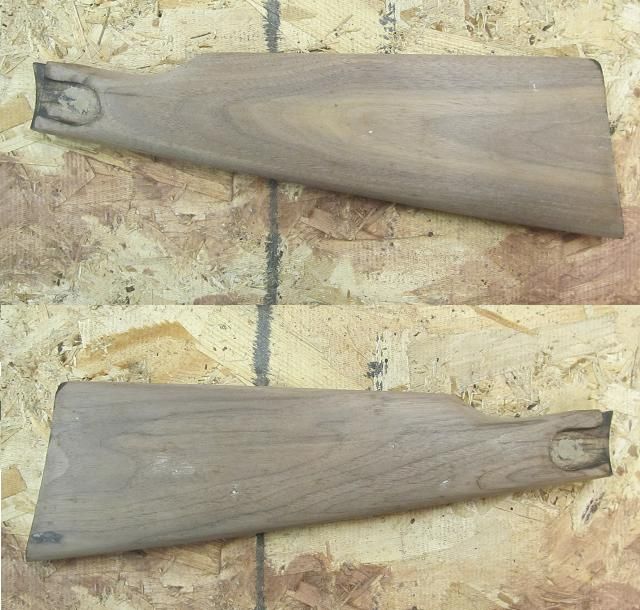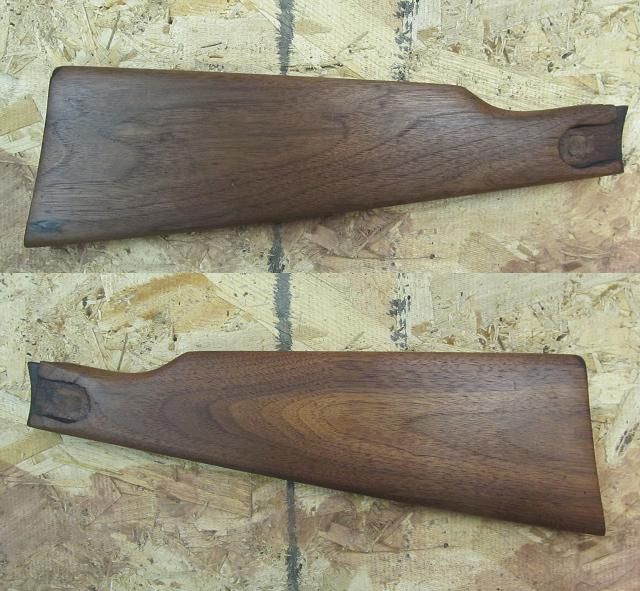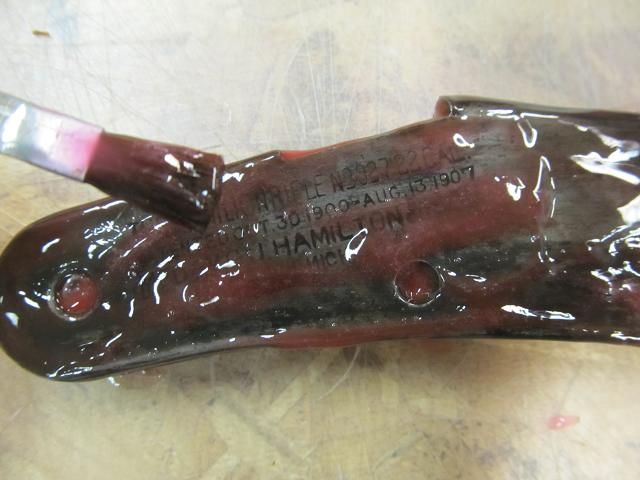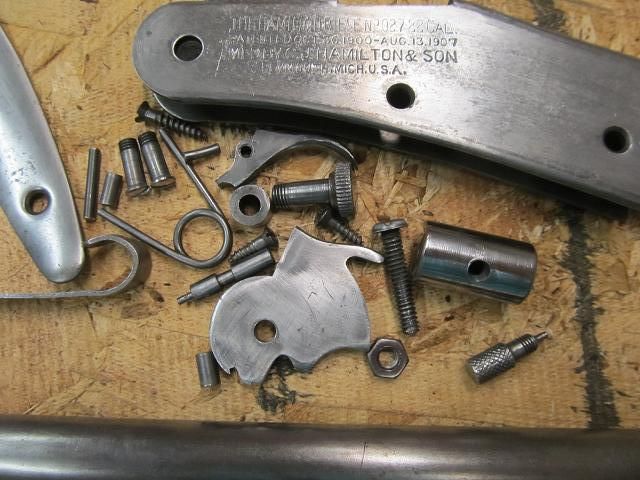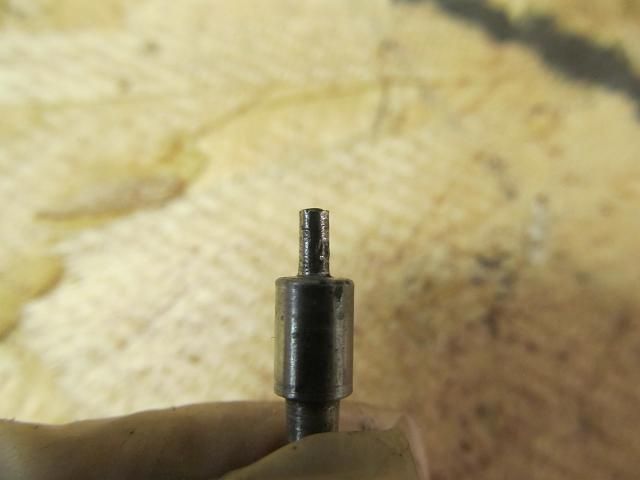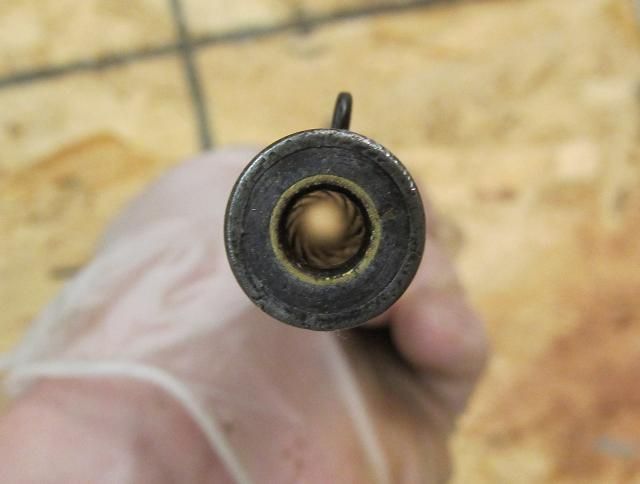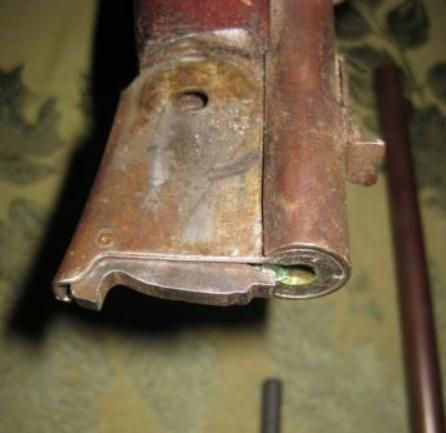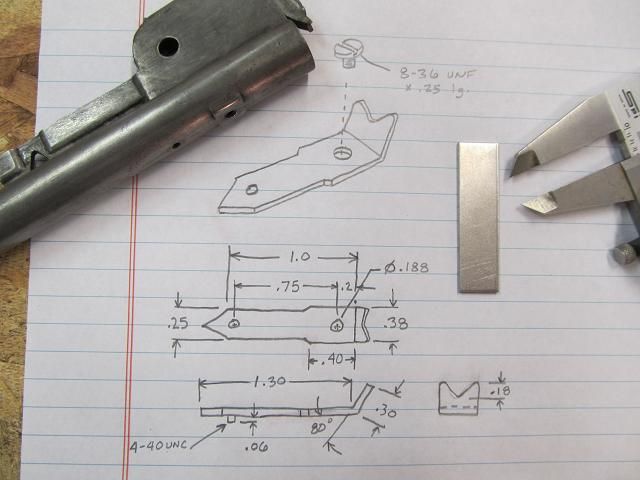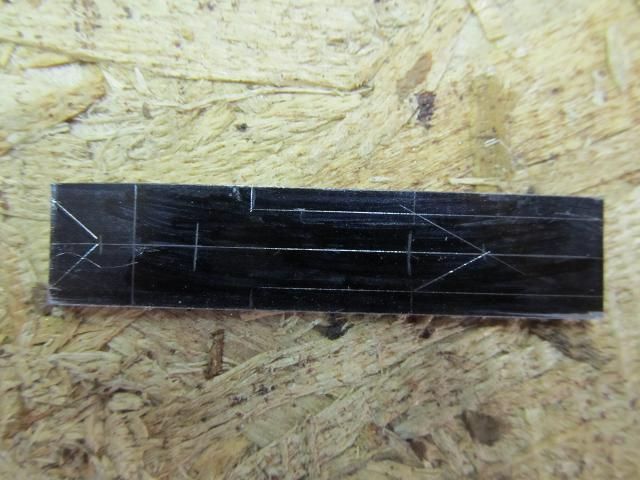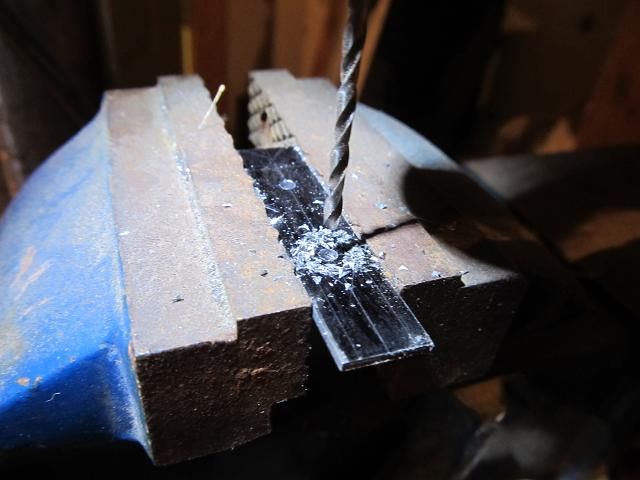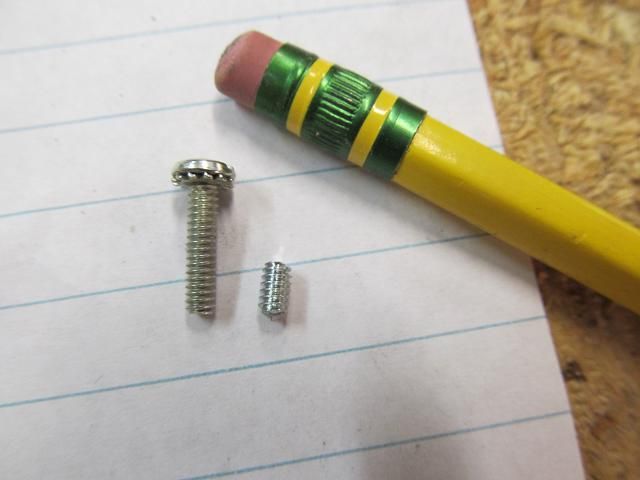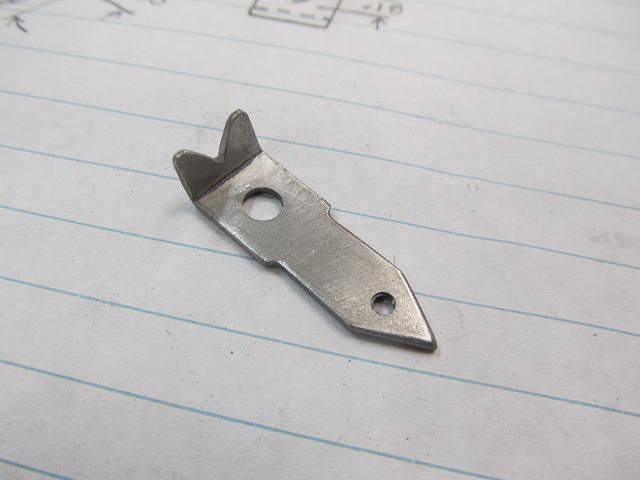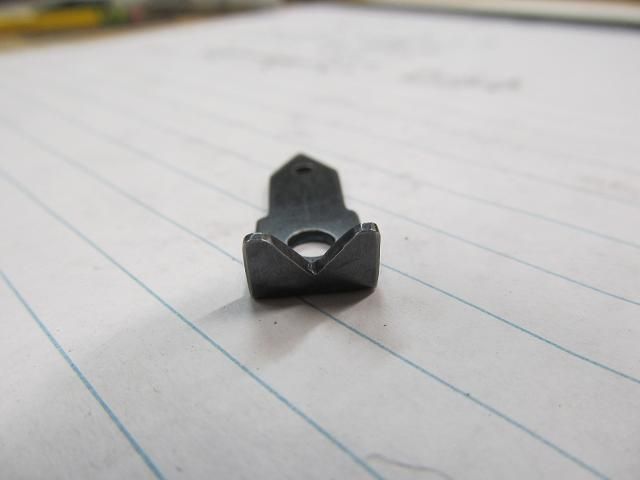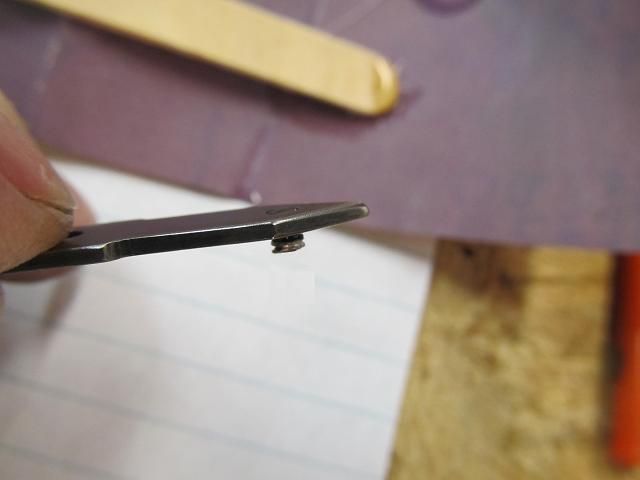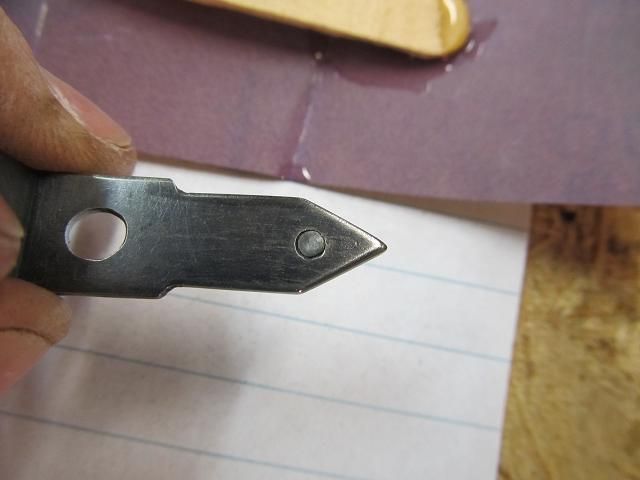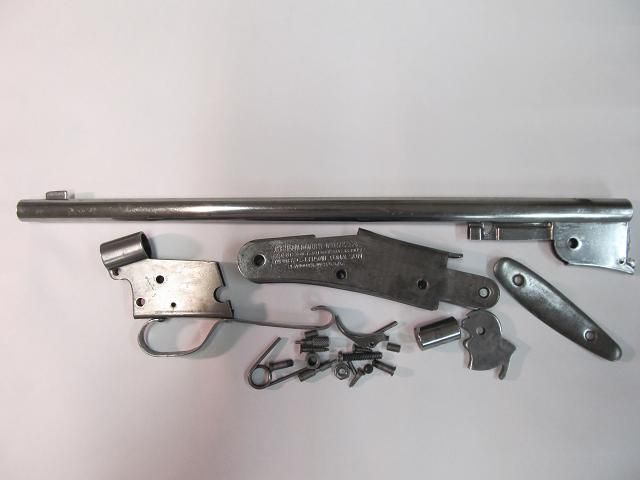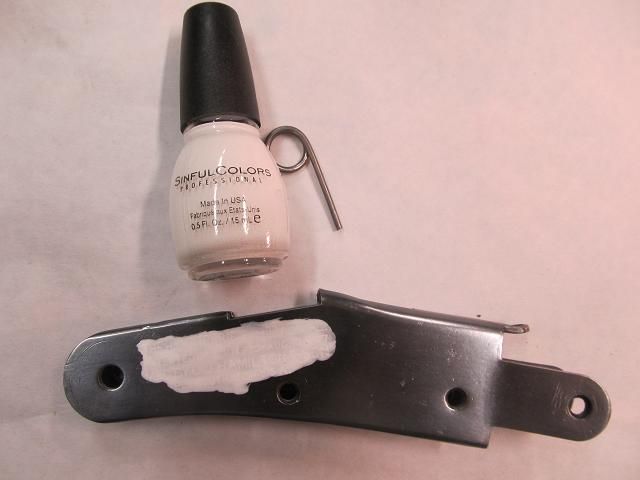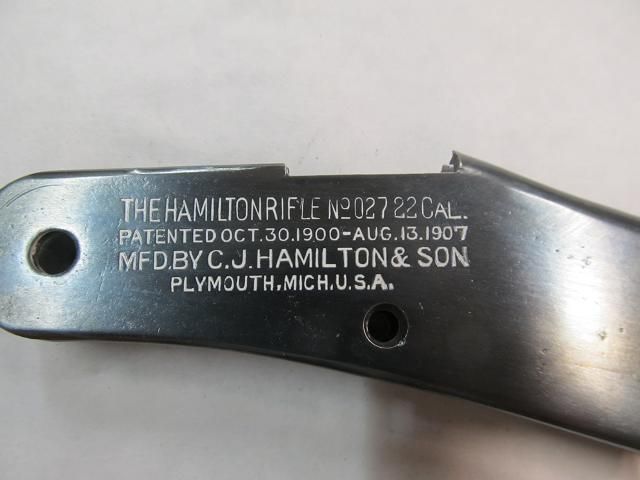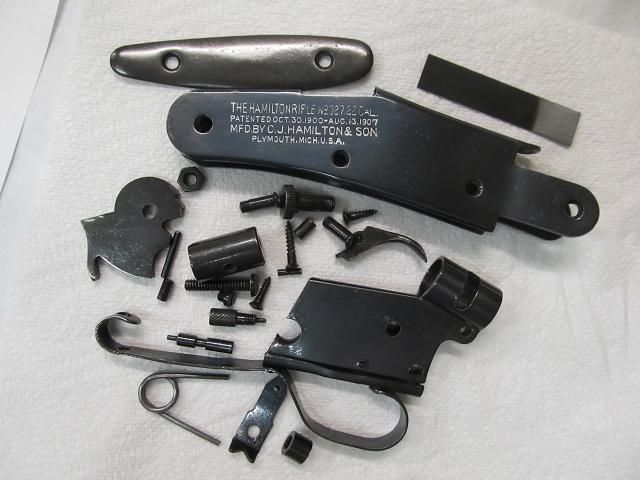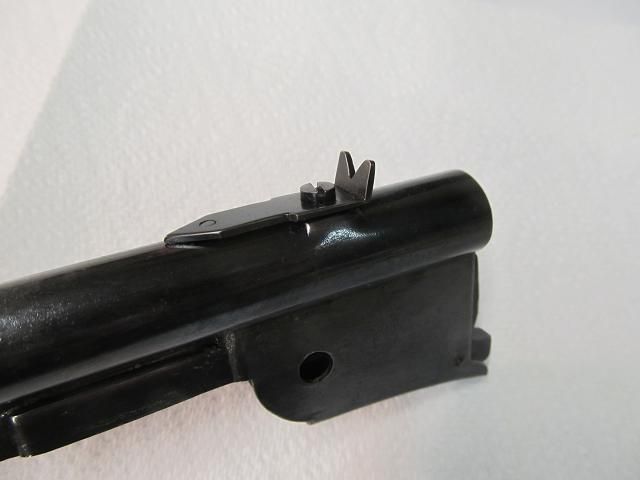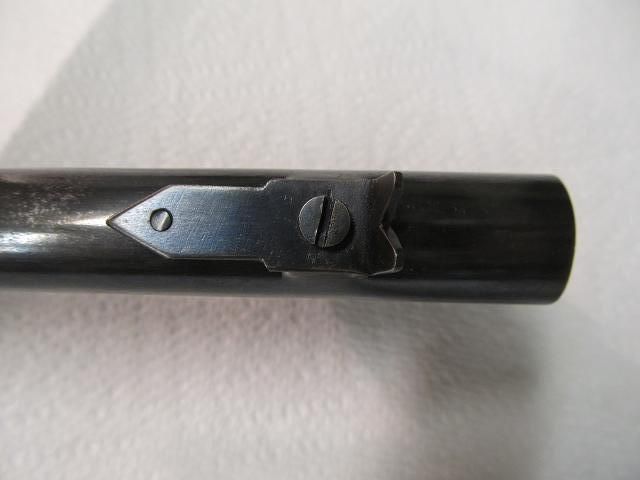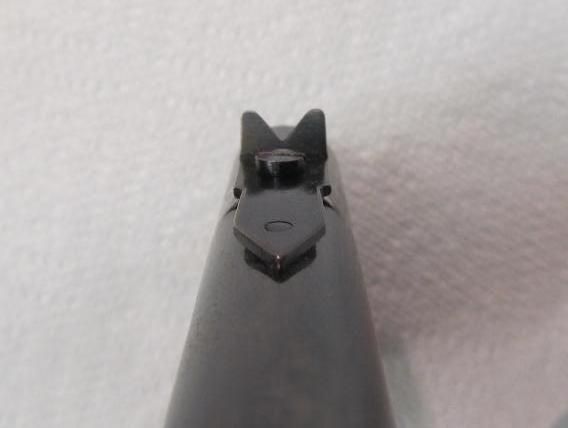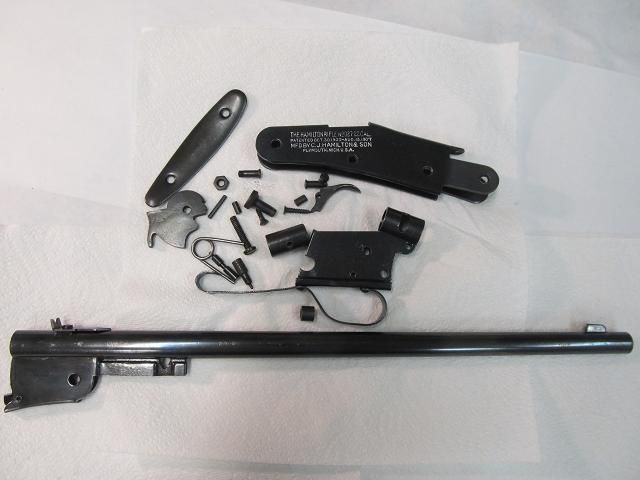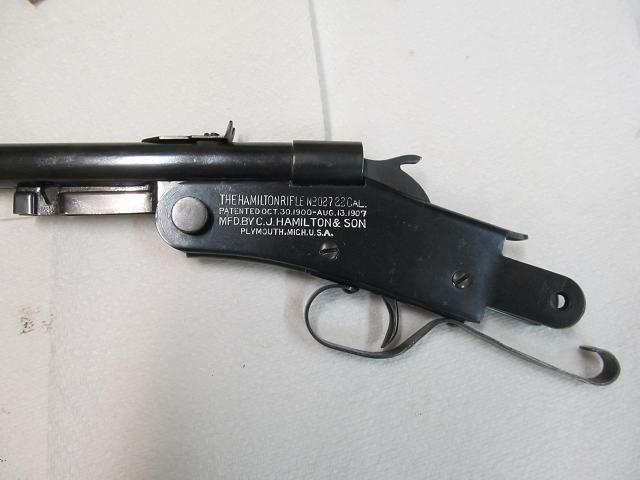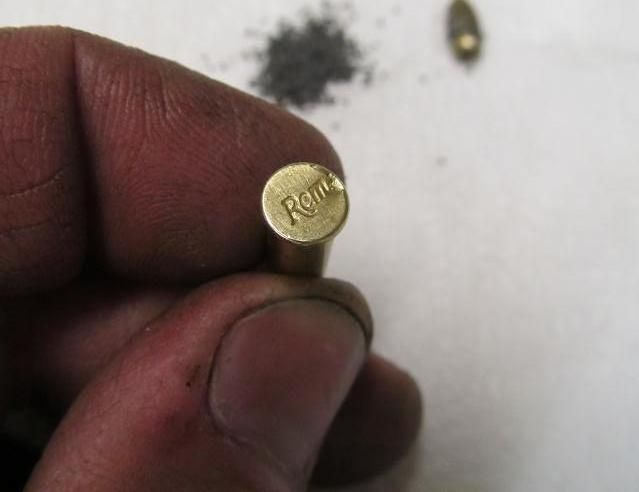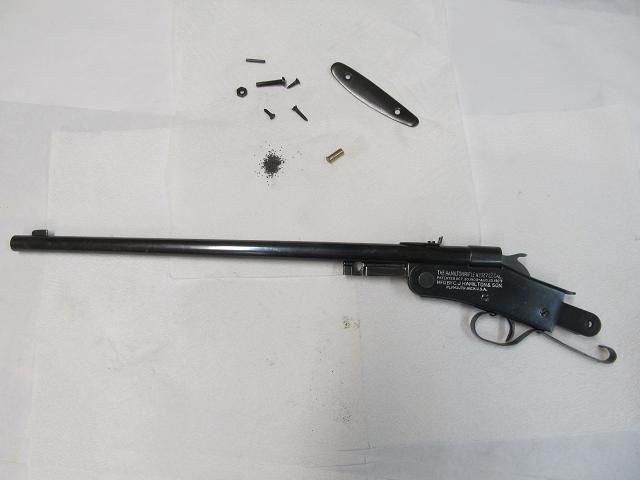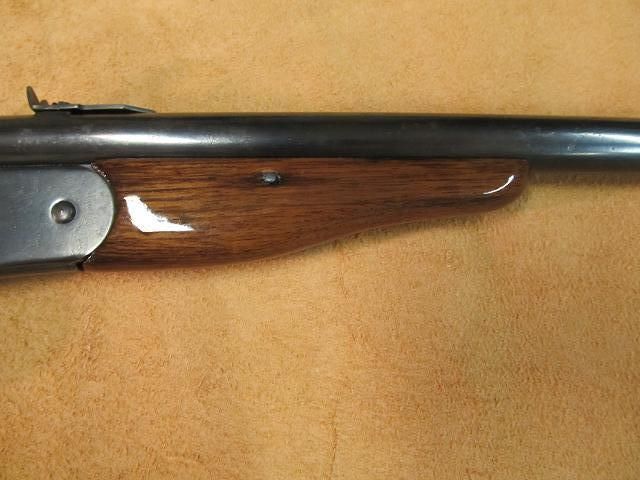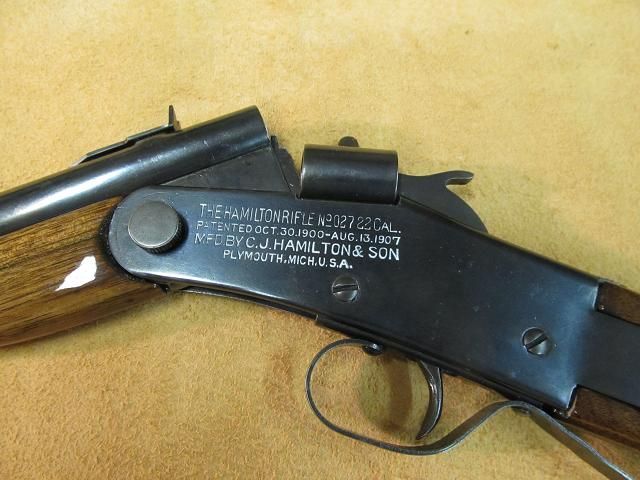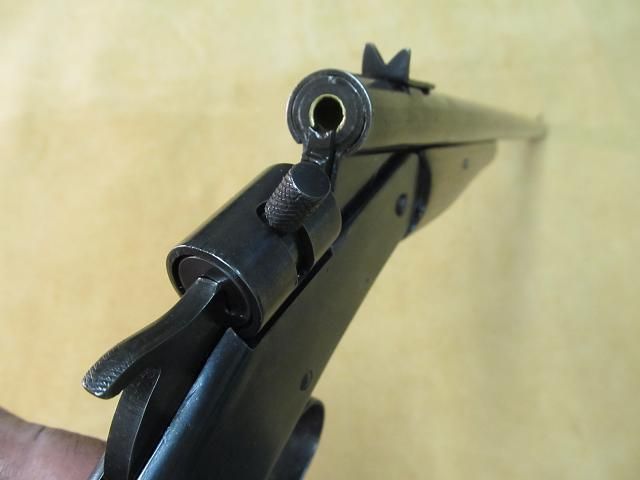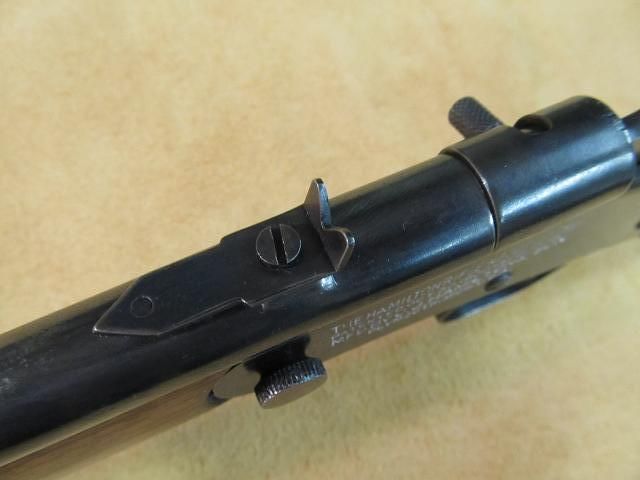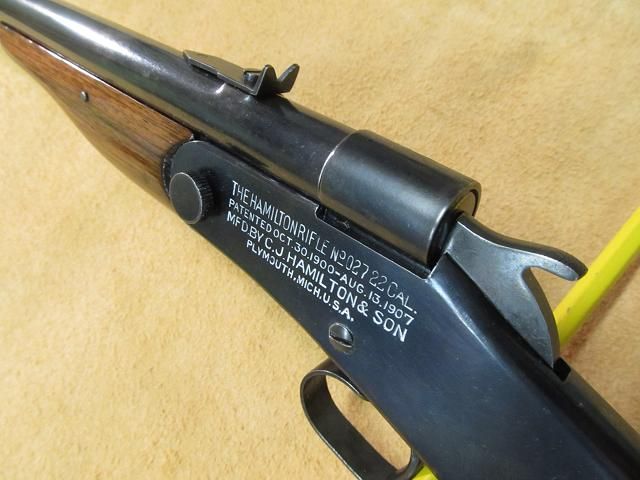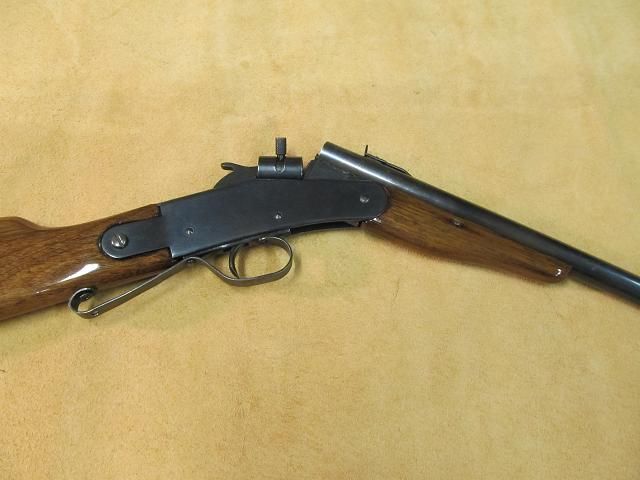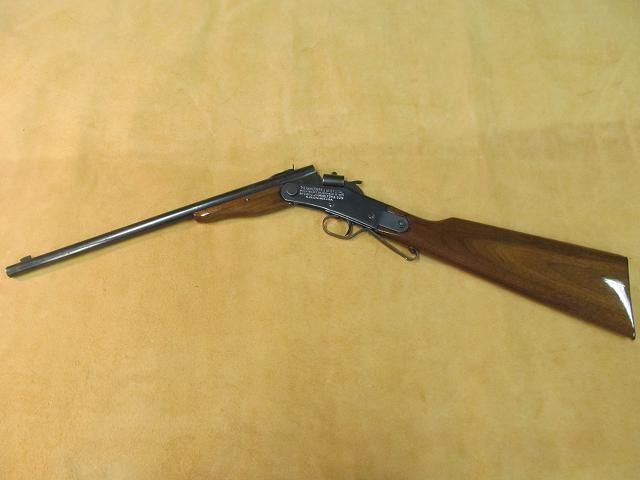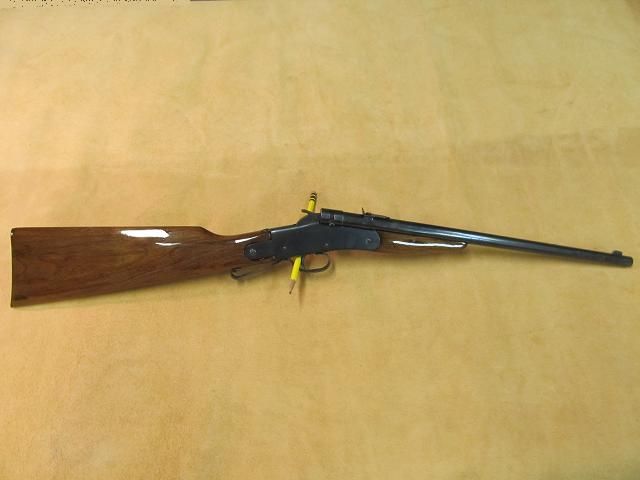- Banned
- #1
Sharp Things
Lil-Rokslider
So you want to be a “Real Boy”?? That was the ad campaign and selling feature over 100 years ago for this unique firearm.
In 1882 Clarence Hamilton, along with other investors, started the Plymouth Iron Windmill Company. Along with a friend, he started producing an all-metal rifle to be given as a bonus to those purchasing an iron windmill. By 1895, more rifles were being produced than windmills. From 1898 to 1945, the Hamilton Rifle Company of Plymouth MI produced the model 27 and 027 These guns were often given as prizes to young entrepreneurs that sold salve, or seeds and was heavily marketed in the back pages of comic books of the time. This was known as a bicycle gun or boys gun.
Retail Companies who sold products such as magazines, costume Jewelry, etc. door to door would use the Hamilton rifle as a promotion, offering a free rifle to those who made their quota. Feed Companies promoting their products would randomly place a rifle in feed sacks. If you were lucky enough to buy the right sack of feed, you got a free Hamilton rifle hidden inside (kind of like Crackerjacks with the toy premium inside). They were the happy meal toy of the time and was a brilliant marketing scheme to get these guns into the hands of as many young boys as possible (My how times have changed. Can you imagine a company offering this premium today??) About a half million of these guns were made.
This Hamilton model was made in 2 versions (model 27 and 027) They were the same except the 027 featured real walnut and a sheet metal butt plate on the stock The difference in price was .25 cents. Here are some ads from the past.
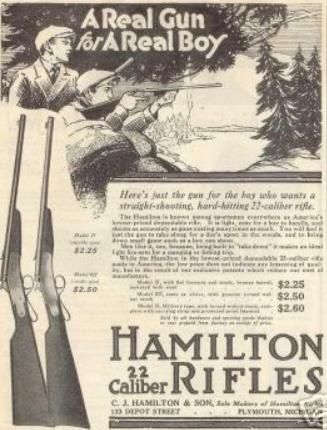
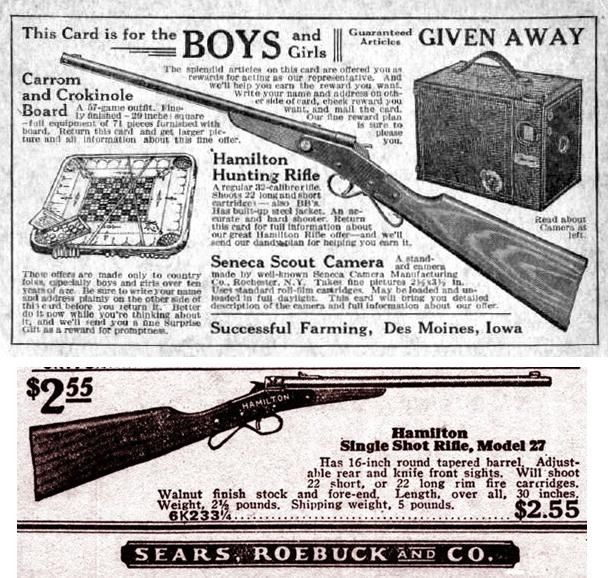
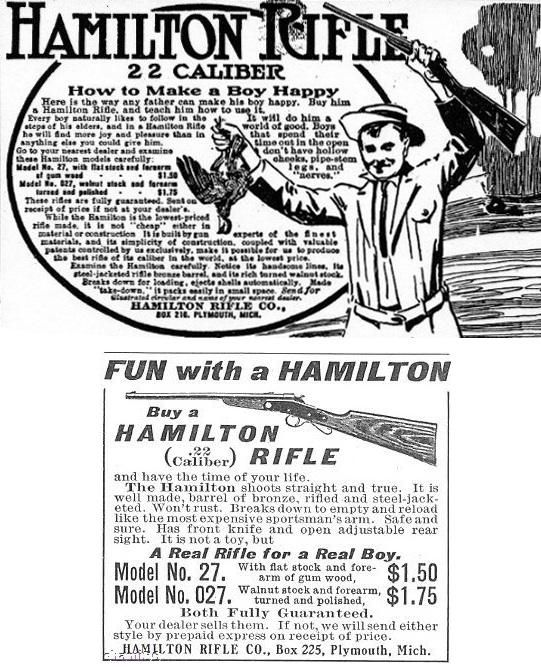
This particular Hamilton model 027 belongs to a co-worker. It was an attic discovery in his Grandfather’s house after the passing of his grandmother. My plan is to fix what needs fixing (and a lot needs fixing), make what is missing and restore the gun for him. There is not a lot of info available on the web in terms of the firearms internals to help me and I cant find a schematic so I will take lots of pics as I disassemble.
s
On thing of note about this gun. It made up almost entirely of sheetmetal and the barrel is brass. Not something you would think of when making a rifle but again this was essentially equivalent to a happy meal prize. If they sold them for a $1.50, you can imagine how much they cost to make (perhaps .20 or .30 cents). The parts were cookie cutter stamped and formed and assembled with pins, screws and rivets (no welding) and there are only a few machined parts.
Clearly they took pride in their name and the guns info. They used up the whole receiver with the stamping.
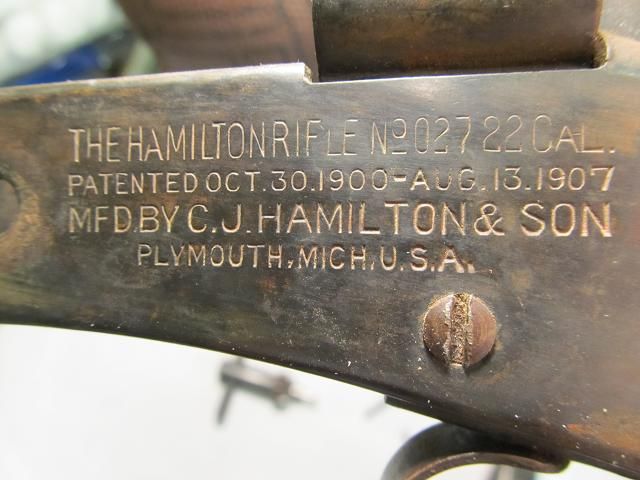
As you can see, this is a tiny little gun when compared to a regular sized shotgun of the same period. The large thumbscrew allowed for fast disassembly down to 2 easy to pack pieces you could carry on your bicycle to plink squirrels.
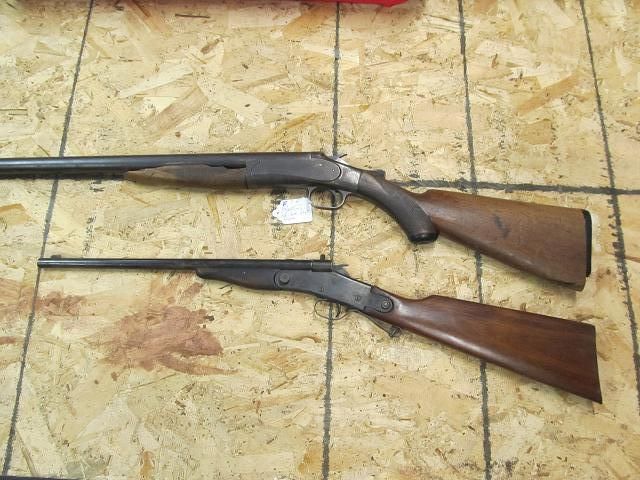
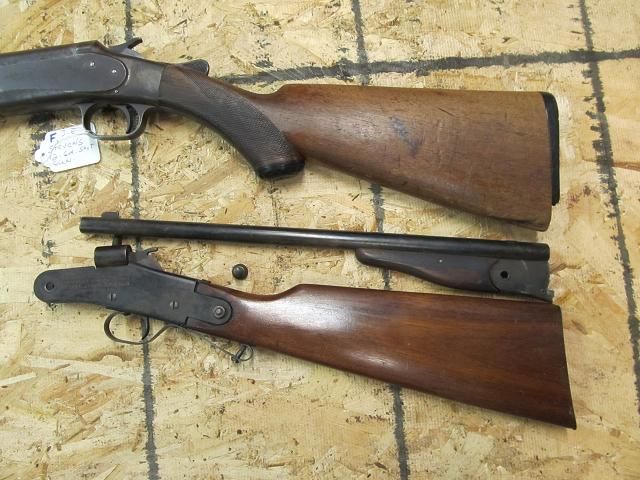
If you know anything about rifles you might think this gun is not legal due to its overall size and barrel length but the BATF has exempted this antique as a curio or relic so its short length does not make it illegal to own or use.
Currently this firearm is not in usable condition. It has several issues that need to be corrected if its ever to be fired and shooting this old 22 with his son is the goal of the owner.
First off I cant fit a 22 caliber bullet in the breech. Something is preventing insertion. Even with the extractor moved out of the way, a shell wont go in. I removed the lead and powder from a round and still could not insert it beyond what you see in the picture.
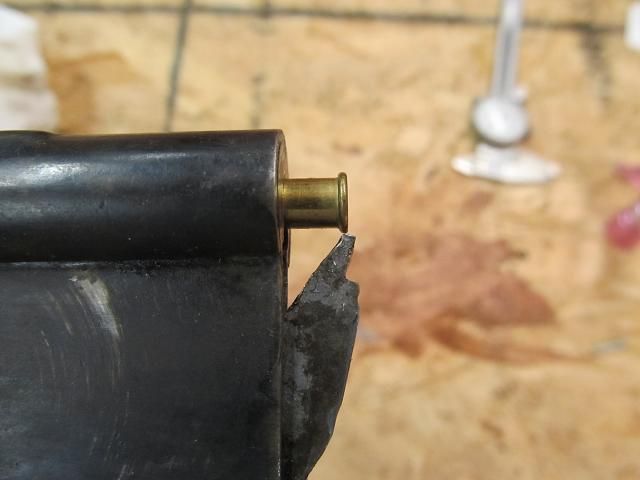
The extractor (when closed) will not allow a shell to be inserted at all. It misformed/bent.

In 1882 Clarence Hamilton, along with other investors, started the Plymouth Iron Windmill Company. Along with a friend, he started producing an all-metal rifle to be given as a bonus to those purchasing an iron windmill. By 1895, more rifles were being produced than windmills. From 1898 to 1945, the Hamilton Rifle Company of Plymouth MI produced the model 27 and 027 These guns were often given as prizes to young entrepreneurs that sold salve, or seeds and was heavily marketed in the back pages of comic books of the time. This was known as a bicycle gun or boys gun.
Retail Companies who sold products such as magazines, costume Jewelry, etc. door to door would use the Hamilton rifle as a promotion, offering a free rifle to those who made their quota. Feed Companies promoting their products would randomly place a rifle in feed sacks. If you were lucky enough to buy the right sack of feed, you got a free Hamilton rifle hidden inside (kind of like Crackerjacks with the toy premium inside). They were the happy meal toy of the time and was a brilliant marketing scheme to get these guns into the hands of as many young boys as possible (My how times have changed. Can you imagine a company offering this premium today??) About a half million of these guns were made.
This Hamilton model was made in 2 versions (model 27 and 027) They were the same except the 027 featured real walnut and a sheet metal butt plate on the stock The difference in price was .25 cents. Here are some ads from the past.



This particular Hamilton model 027 belongs to a co-worker. It was an attic discovery in his Grandfather’s house after the passing of his grandmother. My plan is to fix what needs fixing (and a lot needs fixing), make what is missing and restore the gun for him. There is not a lot of info available on the web in terms of the firearms internals to help me and I cant find a schematic so I will take lots of pics as I disassemble.
s
On thing of note about this gun. It made up almost entirely of sheetmetal and the barrel is brass. Not something you would think of when making a rifle but again this was essentially equivalent to a happy meal prize. If they sold them for a $1.50, you can imagine how much they cost to make (perhaps .20 or .30 cents). The parts were cookie cutter stamped and formed and assembled with pins, screws and rivets (no welding) and there are only a few machined parts.
Clearly they took pride in their name and the guns info. They used up the whole receiver with the stamping.

As you can see, this is a tiny little gun when compared to a regular sized shotgun of the same period. The large thumbscrew allowed for fast disassembly down to 2 easy to pack pieces you could carry on your bicycle to plink squirrels.


If you know anything about rifles you might think this gun is not legal due to its overall size and barrel length but the BATF has exempted this antique as a curio or relic so its short length does not make it illegal to own or use.
Currently this firearm is not in usable condition. It has several issues that need to be corrected if its ever to be fired and shooting this old 22 with his son is the goal of the owner.
First off I cant fit a 22 caliber bullet in the breech. Something is preventing insertion. Even with the extractor moved out of the way, a shell wont go in. I removed the lead and powder from a round and still could not insert it beyond what you see in the picture.

The extractor (when closed) will not allow a shell to be inserted at all. It misformed/bent.


